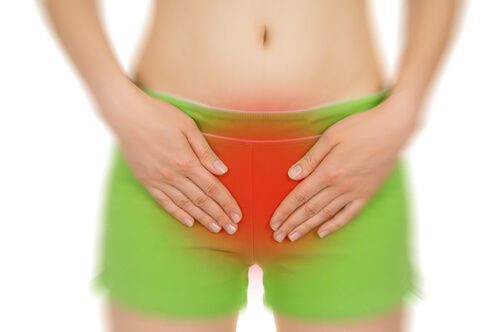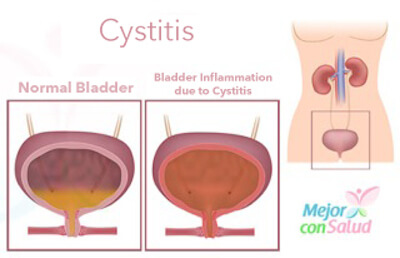Pain When Urinating: Causes and Symptoms


Written and verified by the doctor Mario Benedetti Arzuza
Dysuria is pain and a sensation of burning produced when you urinate. In some cases, it may cause you to urinate more frequently. There are many possible causes, but this type of pain when urinating almost always means that you have a urinary tract infection.
This very common illness tends to disproportionately affect sexually active young women. It can also affect pregnant women, people with diabetes, and those who already have some other type of bladder problem.
However, urinary tract infections are less frequent in men. When they experience pain while urinating, it is more likely to be caused by urethritis or other illnesses related to the prostate.
Also Read: How to Prevent Urinary Tract Infections
What are the symptoms of this pain when urinating?
The symptoms that this condition produces tend to be very different between women and men. Nevertheless, both tend to experience a strong pain when urinating in the form of burning or stinging at the beginning of the process. Many times, the discomfort may be felt when they are done urinating.
If you feel pain when you begin to urinate, this probably means that there is a urinary tract infection. On the other hand, if you feel pain when you finish urinating, it can be a very serious bladder or prostate problem.
Sometimes, the pain is external and caused by inflammation or irritation of the skin.
What are the causes?
An infection in the urethra, bladder, or kidneys is one the most common causes of dysuria or pain when urinating. The most common type of infection is acute cystitis, which is a bladder infection. Another frequent infection is called pyelonephritis. This is a kidney infection. The third most frequent type of source is sexually transmitted diseases.
Other possible causes
- Trauma: This can be caused by a local lesion. Irritation may also result due to the insertion of a catheter or sexual contact.
- Anatomical obstructions or deformities.
- Lesions. They can happen if you have had a lesion on the outside of your genitals.
- External irritation. Commonly brought on by excessively frequent vaginal douching or from using some irritating product.
- Hormonal effects.
- Neurological diseases.
- Kidney, bladder, vaginal, or vulvar cancer.
- Conditions that affect the immune system.
- Kidney or bladder stones.
- Some medications, such as those used for cancer treatment. Unfortunately these products can cause side effects such as bladder irritation.
- Kidney, vaginal, or yeast infections.
How do physicians detect it?
The doctor will review the medical history of the patient and will ask some questions on how frequently they urinate. She or he will also ask if the patient experiences these symptoms at any other times.
They may examine the abdominal area as well as the external genitals. Women require a gynecological exam.
The doctor will also request a urine sample. He or she will then send the samples to the laboratory to be examined under a microscope. They will be able to verify the presence or absence of blood. If there is a bacterial infection, the laboratory will find it by examining cultures in the urine sample. This will also allow them to identify the bacteria causing it.
Dysuria Treatment
The main treatment for pain when urinating cause by infection is a course of antibiotics, which can usually. Still, it is important to know the root causes of the infection. In any case, experts suggest drinking a lot of water. This will greatly reduce the discomfort that pain when urinating causes.
All cited sources were thoroughly reviewed by our team to ensure their quality, reliability, currency, and validity. The bibliography of this article was considered reliable and of academic or scientific accuracy.
- Ford, G., & Decker, C. (2016). Pelvic inflammatory disease. Disease-a-Month, 62(8), 301-305. https://www.sciencedirect.com/science/article/abs/pii/S0011502916000894
- Ge, G., Wang, H., Chen, Y., Li, G., & Ma, L. (2021). Complete urethral injury in the penile fracture: a case report and literature review. Translational Andrology and Urology, 10(2), 969. https://www.ncbi.nlm.nih.gov/pmc/articles/PMC7947453/
- Hanno, P., Erickson, D., Moldwin, R., & Faraday, M. (2015). Diagnosis and treatment of interstitial cystitis/bladder pain syndrome: AUA guideline amendment. The Journal of urology, 193(5), 1545-1553. https://www.auajournals.org/doi/full/10.1016/j.juro.2015.01.086
- Mehta, P., Leslie, S., & Reddivari, A. (2019). Dysuria. StatPearls Publishing. https://europepmc.org/books/nbk549918
- Michels, T., & Sands, J. (2015). Dysuria: evaluation and differential diagnosis in adults. American family physician, 92(9), 778-788. https://pubmed.ncbi.nlm.nih.gov/26554471/
- Moi, H., Blee, K., & Horner, P. (2015). Management of non-gonococcal urethritis. BMC infectious diseases, 15(1), 1-7. https://bmcinfectdis.biomedcentral.com/articles/10.1186/s12879-015-1043-4
- Pinar, U., Phé, V., & Rouprêt, M. (2022). Prostatitis y epididimitis. EMC-Tratado de Medicina, 26(2), 1-10. https://www.sciencedirect.com/science/article/abs/pii/S1636541022464567
- Pineda, J., Martínez, G., Marín, D., Viveros, C., Torres, J., & Pineda, E. (2018). Tratamiento contemporáneo de la litiasis renal piélica: a propósito de un caso. Revista de la Facultad de Medicina (México), 61(4), 16-21. https://www.scielo.org.mx/scielo.php?pid=S0026-17422018000400016&script=sci_arttext
- Tan, C., & Chlebicki, M. (2016). Urinary tract infections in adults. Singapore medical journal, 57(9), 485. https://www.ncbi.nlm.nih.gov/pmc/articles/PMC5027397/
- Zeng, R. (2020). Dysuria. Handbook of clinical diagnostics, 81-82. https://link.springer.com/chapter/10.1007/978-981-13-7677-1_27
- Yee, M. (2015). Cistitis intersticial. Revista Médica de Costa Rica y Centroamérica, 72(614), 95-100. https://www.medigraphic.com/cgi-bin/new/resumen.cgi?IDARTICULO=58582
This text is provided for informational purposes only and does not replace consultation with a professional. If in doubt, consult your specialist.










